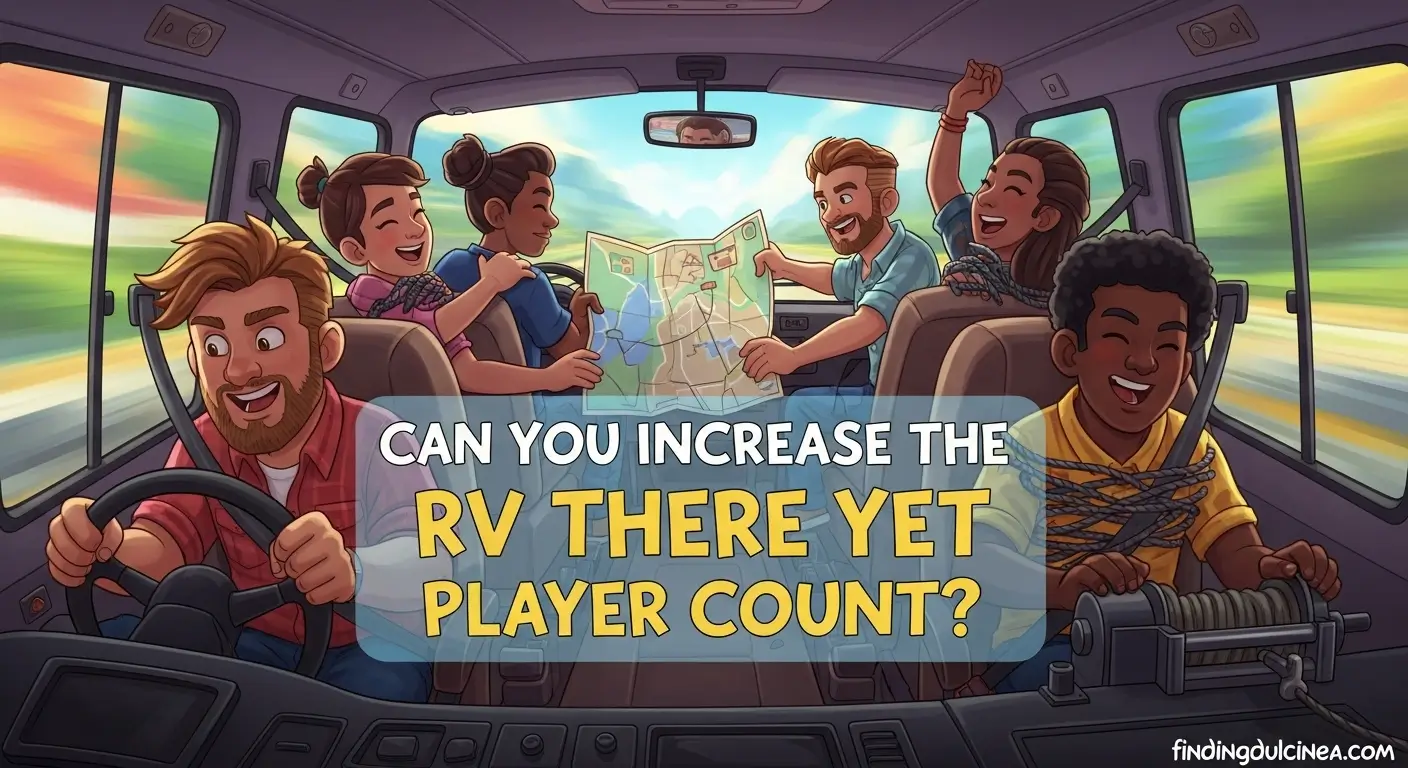Introduction
Since its launch, RV There Yet? apk has captured the hearts of gamers looking for a unique blend of physics-based challenge, survival mechanics, and pure, unadulterated co-op chaos. Developed by Nuggets Entertainment, this indie hit throws you and your friends into the roles of middle-aged men trying to get their recreational vehicle (RV) home from a disastrous vacation. The core experience is managing a bulky, rickety motorhome across treacherous backcountry terrain. But the crucial question for any prospective player is: What is the optimal player count for the best, most chaotic experience?

The game is designed for 2 to 4 players in online co-op. While you can technically attempt a solo run, the core design leans heavily on teamwork and delegation. Our analysis dives deep into how the player count fundamentally changes the gameplay loop and the level of comedic frustration.
Player Count Breakdown: The Scale of Chaos
The complexity of RV There Yet? comes from the simultaneous demands on the crew. The main roles—driving, navigation, winching, and maintenance—must all be managed to survive a journey filled with steep cliffs, dangerous wildlife, and persistent vehicle breakdowns.
The Duo Dynamic: 2 Players – The Ultimate Challenge
Playing with just two people transforms the game from a chaotic party experience into a demanding test of efficiency and marital-level communication.
- The Difficulty: Maximum. With only two players, each person must constantly swap between tasks, leaving the other vulnerable or the RV in a precarious state.
- Role Requirements: The two players must effectively share all four major responsibilities:
- Player 1: Primary Driver & Spotter/Navigator.
- Player 2: Winch Operator & Repair/Survival Expert.
- The Experience: Success in a two-player run is incredibly rewarding, demanding a level of focus and coordination that often leads to silence rather than shouting. It’s less about chaos and more about high-pressure execution. If you enjoy survival games that truly test your friendship, this is the player count for you.
The Sweet Spot: 3 Players – Structured Stress
The addition of a third player significantly eases the constant pressure, allowing for a more defined and manageable division of labor.
- The Difficulty: Medium-High. Still challenging, but manageable.
- Role Requirements: Roles can now be clearly assigned, creating a functional, if stressed, crew.
- Driver: Dedicated solely to steering and throttle control.
- Winch Master: Dedicated to the crucial task of rigging and operating the winch.
- Utility/Repair: Dedicated to being the mobile survivalist—scavenging at checkpoints, feeding the crew, using antidotes/EpiPens, and performing quick-fixes on the RV.
- The Experience: Three players provides the best balance of challenge and organization. There’s still plenty of stress to generate comedic moments, but the core objective feels more attainable. This is the recommended count for groups who want both a challenge and a reasonable chance of finishing the run.
The Optimal Chaos: 4 Players – Maximum Mayhem Guaranteed
Four players is the maximum supported by the game and is hands-down the formula for the most laughter, the most shouting, and the most spectacular vehicle destructions. This is where the true “dad-core” experience shines.
- The Difficulty: Medium. While technically easier to manage tasks, the sheer volume of player input guarantees mistakes and high comedic value.
- Role Requirements: The roles become hyper-specialized and more prone to individual panic.
- Driver: Stays focused on the road (in theory).
- Front Winch: Dedicated to managing the RV’s nose.
- Rear Winch/Anchor: Dedicated to stabilizing the back or setting up recovery points.
- Survival/Scout: Focuses on the crew’s needs (hunger, health), internal vehicle repairs, and scouting the path ahead.
- The Experience: With four unique voices competing via the in-game proximity chat, the moments of confusion are constant. One player might be frantically trying to winch the RV off a cliff while the other is inside “smoking a ciggie” or trying to grill a frozen meat patty. Four players is the gold standard for “optimal chaos” and viral streaming moments.
Why More Players Means More Fun
Unlike many other co-op titles, a significant portion of RV There Yet?’s appeal is tied to its use of proximity voice chat. This feature is amplified by a full group of four players.
- Communication Failures: As one player wanders off to scout or winch, their voice fades, leading to misheard instructions and subsequent, spectacular failures.
- The Panic Cascade: A single event like a bear attack or an accidental flip—sends four distinct voices into a panicked, overlapping symphony of shouts that is genuinely hilarious to listen to.
- Role Immersion: The proximity chat helps reinforce the “dad-core” theme. Players can loudly complain, argue over directions, or celebrate narrowly avoiding death, all while another player is audibly trying to repair the engine from within the cramped RV.
In short, the proximity chat is the catalyst that turns the 4-player team from merely functional to an agent of pure, comedic destruction.
Tips for a Smooth RV Ride
Regardless of your player count, mastering the core mechanics is key. These elements are what you’ll be coordinating—or yelling about—the most:
- Winching: The winch is the RV’s lifeline. Knowing where to anchor the cable, how to use the physics to your advantage, and when to cut the wire is the most important skill for non-drivers.
- Survival: Players must manage hunger and health bars, which are affected by damage and environmental factors. Antidotes and EpiPens are crucial items to have on hand.
- Vehicle Maintenance: Keep an eye on the RV’s component health. Repairing the frame, changing tires, and topping up the engine are secondary tasks that fall to the non-driving/winching crew.
- Co-op Focus: The game is an exercise in resource management and communication. Successful teams prioritize the RV’s health over individual glory.
Conclusion: Optimal Player Count for RV There Yet?
For players who prioritize a structured challenge and a strong sense of accomplishment, 3 players provides the best distribution of roles and a high probability of success. However, if your goal is the most memorable, chaotic, and laugh-out-loud experience that led to the game’s viral success, the answer is undoubtedly 4 players. The friction, overlapping shouts, and individual mistakes that come with a full crew are the secret ingredients that make RV There Yet? one of the best recent additions to the co-op party game genre. Load up your friends, assign a Driver (at your own risk!), and prepare for the road trip from hell. You’ll be asking “RV there yet?” all the way home.


I love how you broke down the player count dynamics — especially the distinction between ‘structured stress’ with 3 players and ‘maximum mayhem’ at 4. It’s interesting how the game’s design encourages that balance between coordination and chaos. I’ve found that with 4 players, it becomes less about control and more about embracing the inevitable disasters together, which is exactly what makes it so fun.